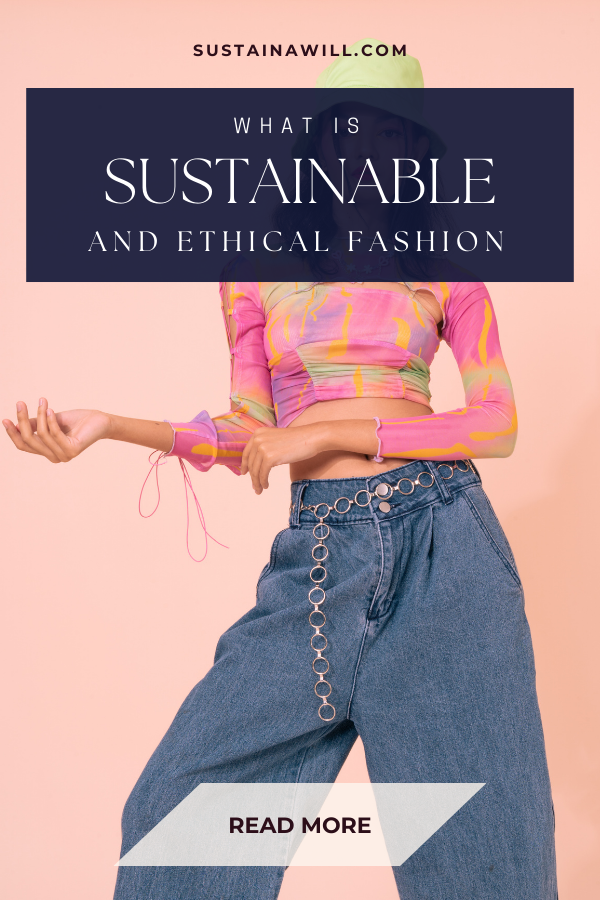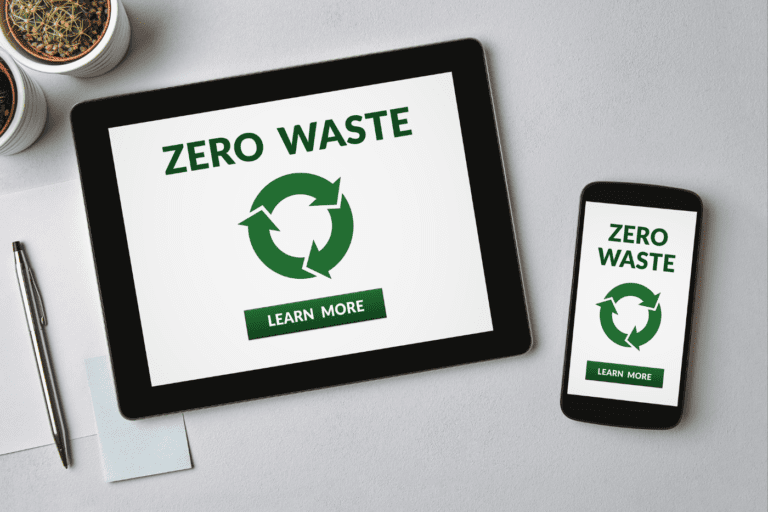Have you ever wondered if fashion could be a force for good? Well, good news—it absolutely can!
Sustainable and ethical fashion is not just a buzzword; it’s a movement, a commitment to making our clothing choices better for the planet and the people involved in the process. So, let’s take a closer look at ethical and sustainable fashion.
What is ethical and sustainable fashion?
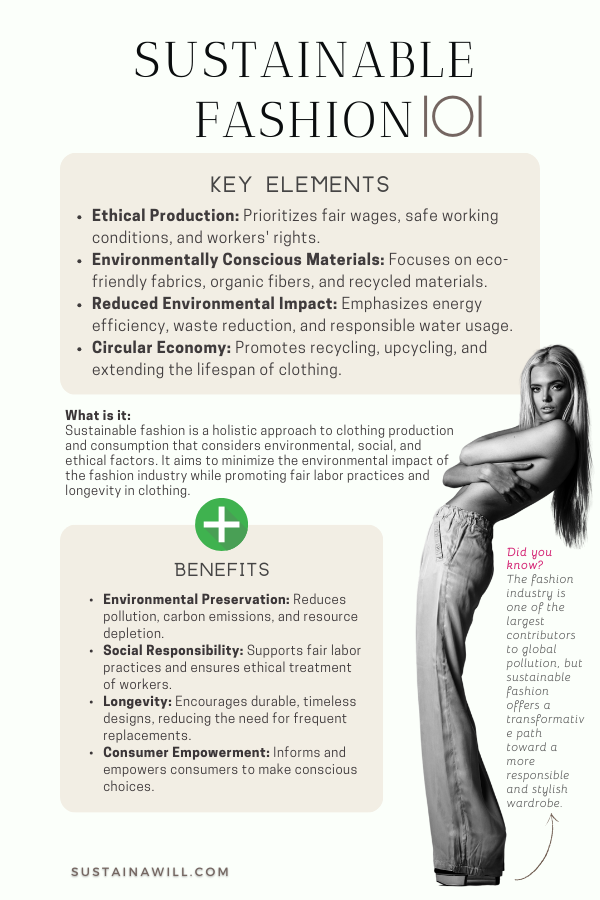
Ethical and sustainable fashion revolves around producing and consuming clothing in a way that minimizes harm to the environment, respects workers’ rights, and promotes overall social responsibility.
It’s a conscious approach to fashion that seeks to redefine our relationship with what we wear.
So, Does Sustainable Fashion Exist?
Absolutely! Here’s what you should look for:
- Eco-Friendly Materials:
- Fair Labor Practices:
- Brands embracing sustainable fashion ensure fair wages, safe working conditions, and the overall well-being of the people crafting our clothes.
- Transparent Supply Chains:
- Sustainable fashion is all about openness. Brands proudly share information about where and how their clothes are made, fostering trust and accountability.
- Circular Fashion:
- Forget the linear ‘take-make-dispose’ model. Sustainable fashion embraces circularity, encouraging recycling, upcycling, and reducing waste.
- Animal Welfare:
- Brands committed to sustainability consider the welfare of our furry friends. Look for cruelty-free and animal-friendly certifications.
Embracing ethical and sustainable fashion is not just a trend; it’s a step towards a brighter, greener, and more compassionate future. Join the movement, and let your wardrobe reflect your values!
Is ethical fashion the same as sustainable?
While closely related, ethical fashion and sustainable fashion are not exactly the same. Let’s break it down:
Ethical Fashion:
- Focus: Primarily centers on the treatment of people throughout the entire fashion supply chain.
- Concerns: Addresses labor conditions, fair wages, worker rights, and overall social responsibility.
- Examples: Brands practicing ethical fashion ensure safe working conditions, fair pay, and humane treatment of workers.
Sustainable Fashion:
- Focus: Primarily centers on the environmental impact of the fashion industry.
- Concerns: Involves the use of eco-friendly materials, reducing carbon footprint, minimizing waste, and promoting circular fashion.
- Examples: Brands practicing sustainable fashion use recycled materials, employ energy-efficient processes, and have transparent supply chains.
The Overlapping Ground:
- Both ethical and sustainable fashion aim to create a positive impact, whether on people or the planet.
- Brands often adopt a holistic approach, incorporating both ethical and sustainable practices.
In a Nutshell:
While there’s significant overlap, ethical fashion primarily focuses on the social aspects of the industry, while sustainable fashion takes a broader approach encompassing environmental considerations.
The best brands often integrate both ethical and sustainable practices for a well-rounded, responsible approach to fashion.
What is Fast Fashion?

Fast fashion is the Usain Bolt of the clothing industry – quick, accessible, and constantly changing.
It’s a business model that prioritizes speed and low-cost production to quickly bring runway trends to mainstream consumers. Think rapidly produced, budget-friendly clothes (mostly made out of cheap synthetic fabrics) hat hit the shelves in a blink.
Here’s the sticky part. While fast fashion offers affordability and trendy outfits, it often comes at a humongous cost: The rapid pace of production can lead to exploitative labor practices, unsafe working conditions, and a massive environmental footprint.
The sheer volume of clothing produced leads to mountains of textile waste, and the pressure to keep prices low can compromise the welfare of the workers in the supply chain.
The Ethical Dilemma: Can Fast Fashion Ever Be Ethical?
The million-dollar question. It’s a tough nut to crack but the fast fashion industry is at a crossroads. A lot of brands are making strides toward ethical practices – embracing transparency, improving working conditions, and exploring sustainable materials.
However, the inherent challenge lies in the core of the fast fashion model, where speed and low costs are paramount. Achieving true ethics in fast fashion requires a fundamental shift in the entire industry’s approach:
Key Transformations Needed for Sustainable Fast Fashion:
- Sustainable Fiber Adoption:
- Shift from conventional cotton to organic or regenerative cotton.
- Replace synthetic fabrics with sustainable alternatives like Tencel, hemp, or recycled polyester.
- Green Dyeing Practices:
- Embrace eco-friendly dyeing methods, opting for sustainable dyes to minimize water pollution and energy consumption.
- Circular Design Strategies:
- Implement circular design principles, focusing on recyclability and ensuring garments can be easily disassembled and repurposed.
- Reduced Water Usage:
- Implement water-efficient processes in production, minimizing water waste and pollution.
- Ethical Labor Practices:
- Prioritize fair wages and safe working conditions, ensuring ethical treatment throughout the supply chain.
- Minimal Packaging Impact:
- Opt for minimal and sustainable packaging, reducing single-use plastics and excess material.
- Transparency and Traceability:
- Increase transparency in the supply chain, allowing consumers to trace the journey of each garment and verify sustainability claims.
- Reduced Carbon Footprint:
- Adopt energy-efficient manufacturing processes and logistics to minimize carbon emissions.
- Extended Product Lifespan:
- Design durable and timeless garments, encouraging consumers to buy less and invest in quality items that withstand trends.
- Recycling Programs:
- Establish take-back programs for old garments, promoting the recycling and upcycling of clothing to reduce textile waste.
- Consumer Education:
- Educate consumers about the environmental and social impact of their choices, fostering a mindset shift towards sustainable fashion.
- Innovation in Technology:
- Embrace technological advancements for sustainable alternatives, such as 3D knitting or alternative materials derived from agricultural waste.
- Regenerative Agriculture Practices:
- Encourage the use of regenerative agricultural practices for fiber cultivation, promoting soil health and biodiversity.
- Localized Production:
- Explore localized manufacturing to reduce the carbon footprint associated with long-distance transportation.
- Industry Collaboration:
- Foster collaboration within the fashion industry to share best practices, innovations, and collectively drive towards sustainability goals.
These transformative steps collectively contribute to reshaping fast fashion into a more sustainable and responsible industry.
Why is sustainable fashion better than fast fashion?

In the battle between sustainable and fast fashion, the former emerges as a champion for the planet, people, and ethical values. t’s not just a trend; it’s a transformative movement shaping the future of fashion.
Here’s why:
- Environmental Harmony:
- Sustainable Fashion: Embraces eco-friendly materials, reducing the industry’s environmental footprint.
- Fast Fashion: Often relies on resource-intensive processes, contributing to pollution and depletion of natural resources.
- Ethical Practices:
- Sustainable Fashion: Prioritizes fair labor practices, ensuring the well-being and rights of workers throughout the supply chain.
- Fast Fashion: Is notorious for exploitative labor conditions, low wages, and unsafe workplaces.
- Longevity Over Disposable Trends:
- Sustainable Fashion: Encourages timeless designs, quality craftsmanship, and durable materials, promoting longevity.
- Fast Fashion: Favors cheaply made, trendy pieces that contribute to a ‘wear and discard’ culture, leading to excessive waste.
- Transparency and Accountability:
- Sustainable Fashion: Often practices transparency, sharing information about the entire production process, including sourcing and manufacturing.
- Fast Fashion: Can be opaque, with some brands reluctant to disclose details about their supply chains.
- Waste Reduction:
- Sustainable Fashion: Embraces circularity, promoting recycling and upcycling to minimize textile waste.
- Fast Fashion: Generates massive amounts of waste due to short product lifecycles and the disposal of cheaply made garments.
- Social Impact:
- Sustainable Fashion: Prioritizes positive social impact, supporting local communities, fair wages, and ethical working conditions.
- Fast Fashion: Often perpetuates social injustices through low wages, poor working conditions, and a lack of workers’ rights.
- Consumer Empowerment:
- Sustainable Fashion: Encourages conscious consumerism, empowering individuals to make choices aligned with their values.
- Fast Fashion: Promotes impulse buying driven by fleeting trends, encouraging overconsumption.
How To Create a Sustainable & Ethical Wardrobe?
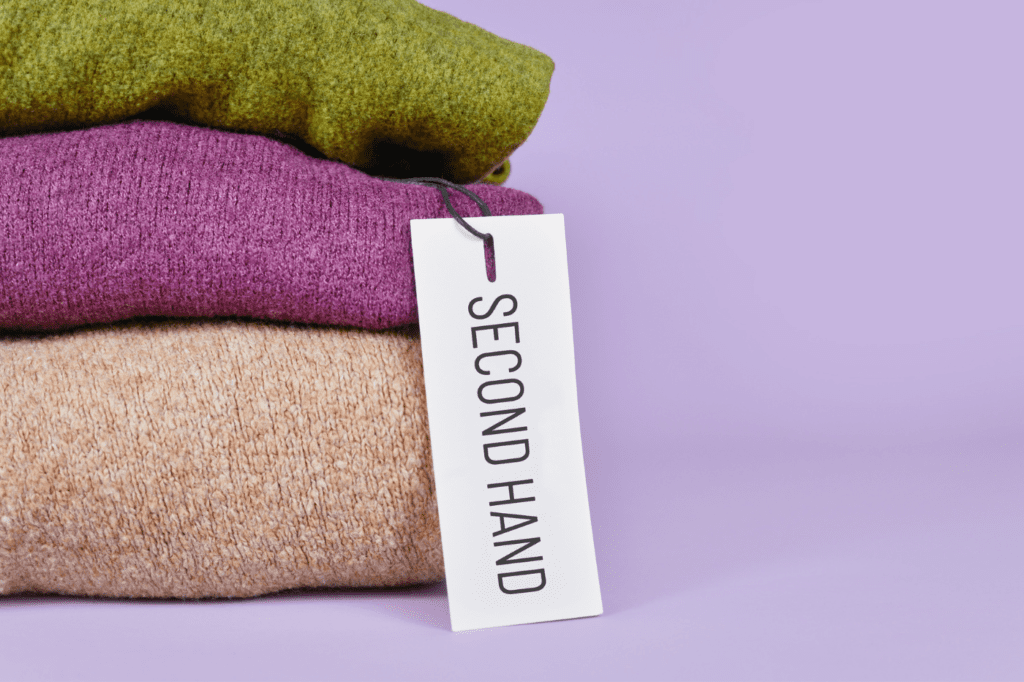
Here’s your easy guide to a Sustainable & Ethical Wardrobe:
- Educate Yourself:
- Research: Understand the impact of the fashion industry on the environment and workers. Learn about sustainable materials, ethical brands, and sustainability certifications.
- Assess Your Wardrobe:
- Audit: Take stock of your current clothes. Identify pieces you love and those you rarely wear. This will guide your future purchases.
- Define Your Style:
- Personal Style: Determine your style preferences. Knowing what you love helps you curate a wardrobe with timeless pieces.
- Prioritize Quality Over Quantity:
- Invest: Choose well-made, durable items that withstand trends. Quality pieces last longer, reducing the need for frequent replacements.
- Choose Sustainable Materials:
- Eco-Friendly Fabrics: Opt for organic cotton, Tencel, hemp, or recycled materials. These choices minimize environmental impact.
- Support Ethical Brands:
- Research Brands: Look for companies committed to fair labor practices, transparency, and sustainability. Check sustainability certifications like Fair Trade or B Corp.
- Secondhand & Vintage Finds:
- Thrifting: Explore thrift stores, consignment shops, and online platforms for pre-loved fashion. It’s sustainable and often more affordable.
- Mindful Shopping:
- Slow Down: Avoid impulse purchases. Take time to consider if an item aligns with your values and complements your existing wardrobe.
- Capsule Wardrobe Concept:
- Simplicity: Consider creating a capsule wardrobe with versatile pieces that can be mixed and matched for various looks.
- Recycle and Upcycle:
- Waste Reduction: Recycle old clothes through designated programs. You can get creative with upcycling projects to breathe new life into worn items.
- Care for Your Clothes:
- Maintenance: Follow care instructions to prolong the life of your garments. Mend or tailor items instead of discarding them.
- Spread the Word:
- Advocate: Share your sustainable journey with others. Encourage friends and family to make conscious fashion choices.
Creating a sustainable and ethical wardrobe is a journey, not a sprint. Each thoughtful choice contributes to a fashion industry that values both people and the planet. Happy styling!
Where to Shop For Sustainable and Ethical Fashion?
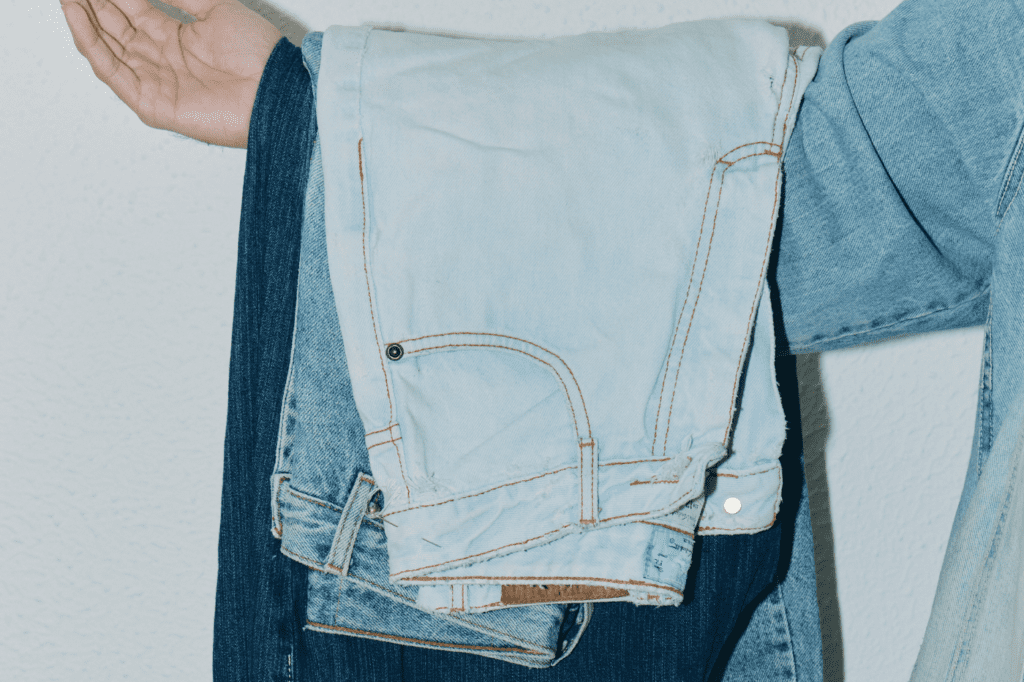
Looking to revamp your wardrobe with conscious choices? Check out these sustainable and ethical fashion brands that blend style with a commitment to the planet and ethical practices:
$ – Yes Friends
- Range: Menswear, Womenswear, Plus Size
- Categories: Denim, Jackets & Blazers, Hoodies & Sweatshirts, Tops & Blouses, T-Shirts, Shorts, Plus Size
$$ – Gazur
- Range: Menswear, Womenswear
- Categories: Hats, Tops & Blouses, Shorts, Suits
$$ – ÉTICA
- Range: Womenswear
- Categories: Shirts, Denim, Dresses, Pants, Jackets & Blazers, Knitwear, Jumpsuits & Playsuits
$$ – tentree
- Range: Kids, Menswear, Womenswear
- Categories: Jackets & Blazers, Activewear, Underwear
$$ – ARTICLE22
- Range: Menswear, Womenswear
- Categories: Jewellery
$$ – MUD Jeans
- Range: Menswear, Womenswear
- Categories: Shirts, Skirts, Denim, Pants, Jackets & Blazers, Shorts
$$$ – ASKET
- Range: Menswear, Womenswear
- Categories: Shirts, Denim, Sweaters, Pants, Hoodies & Sweatshirts, Knitwear, T-Shirts, Underwear, Shorts
$$$ – VEERAH
- Range: Womenswear
- Categories: Boots, Flats, Heels, Sandals, Hair Accessories, Jewellery
$$$$ – Triarchy
- Range: Womenswear
- Categories: Denim, Jackets & Blazers, Shorts
$$$$ – Adidas by Stella McCartney
- Range: Menswear, Womenswear
- Categories: Backpacks, Activewear, Sportswear, Maternity, Sneakers
Discover fashion that aligns with your values while making a positive impact. Happy mindful shopping!
Popular brands and how sustainable (ethical) they are in 2024
Explore the sustainability and ethical integrity of your favorite brands at Good On You’s Directory. It’s an amazing resource that provides valuable insights into a brand’s commitment to sustainability.
Stay informed and make conscious choices for a better planet!
How sustainable and ethical is H&M?

As of November 2023, H&M receives an overall rating of “Not Good Enough” on Good On You.
The “Planet” rating is influenced by the use of some lower-impact materials but criticizes the unsustainable fast fashion model and insufficient progress towards greenhouse gas emission reduction targets.
For “Animals,” while H&M has a formal animal welfare policy, it still uses certain animal-derived materials. The overall assessment is based on the brand’s environmental, social, and animal welfare practices.
How sustainable and ethical is Zara?
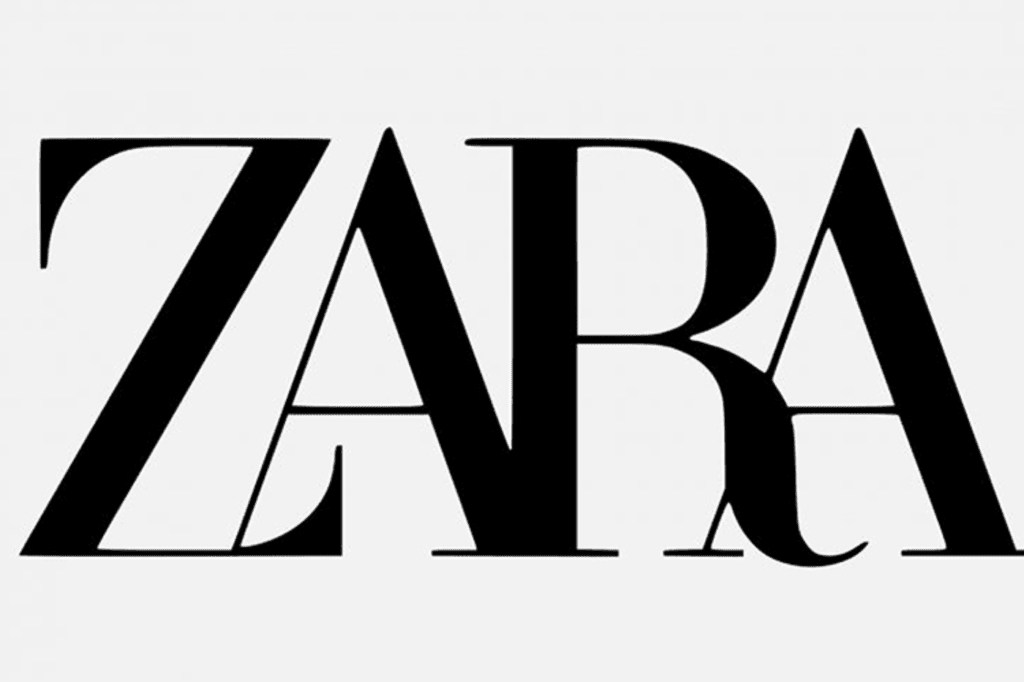
As of February 2022, Zara, owned by Inditex, receives an overall rating of “Not Good Enough” on Good On You.
The “Environment” rating is impacted by its limited use of eco-friendly materials, lack of evidence in meeting greenhouse gas emission reduction targets, and the absence of measures to minimize textile waste.
In the “Labour” rating, Zara is criticized for a significant portion of its final production stage occurring in Spain, a medium-risk country for labor abuse.
The “Animal” rating is unfavorable due to the use of leather and exotic animal hair, despite having a formal animal welfare policy.
How sustainable and ethical is Nike?
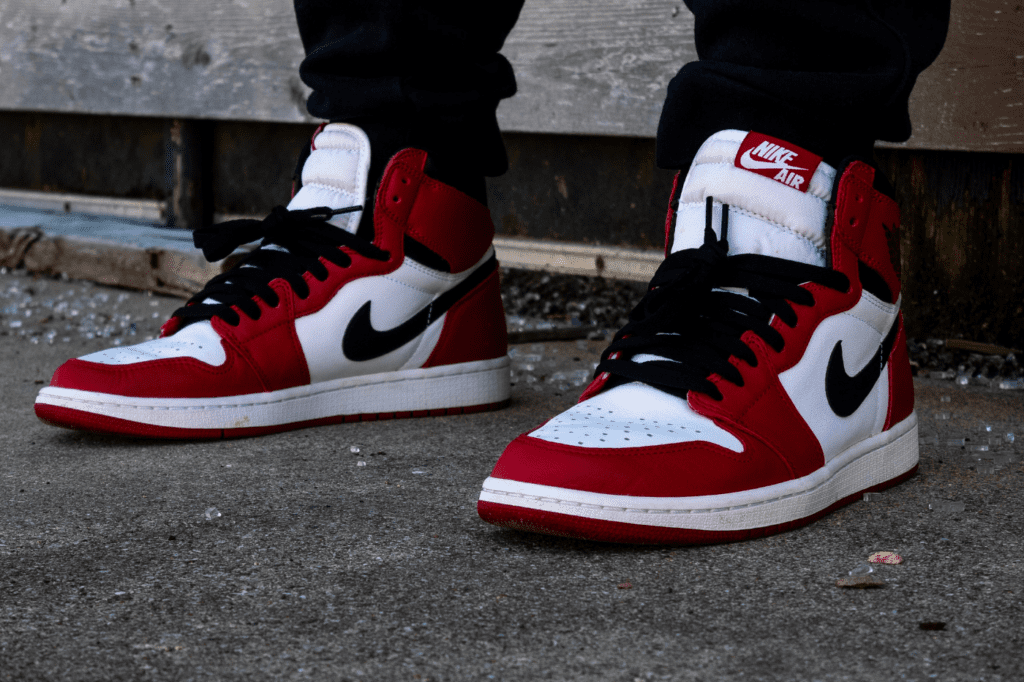
As of May 2023, Nike receives an overall rating of “It’s a Start” on Good On You.
In the “Planet” rating, Nike is recognized for using lower-impact materials, setting a target to eliminate hazardous chemicals (on track for 2025), and committing to reducing greenhouse gas emissions.
In the “People” rating, Nike’s social auditing program is certified by Fair Labor Association, and it scores moderately on the Fashion Transparency Index. While it has a basic policy for diversity and inclusion, there’s no clear evidence of ensuring living wages for most of its supply chain workers.
For “Animals,” Nike has a basic animal welfare policy but lacks clear implementation mechanisms. It uses various animal-derived materials, including recycled leather, and there’s no evidence of tracing these materials to the first production stage.
How sustainable and ethical is Shein?

As of March 2023, SHEIN receives an overall rating of “We Avoid” (the worst you can get) on Good On You.
In the “Planet” rating, SHEIN is criticized for using few lower-impact materials, following an unsustainable fast fashion model, and lacking evidence of meaningful action to reduce hazardous chemicals, climate impacts, and microplastic impacts.
For “Animals,” SHEIN has a formal animal welfare policy but lacks clear implementation mechanisms. It uses various animal-derived materials but doesn’t provide evidence of tracing them to the first production stage.
How sustainable and ethical is Adidas?
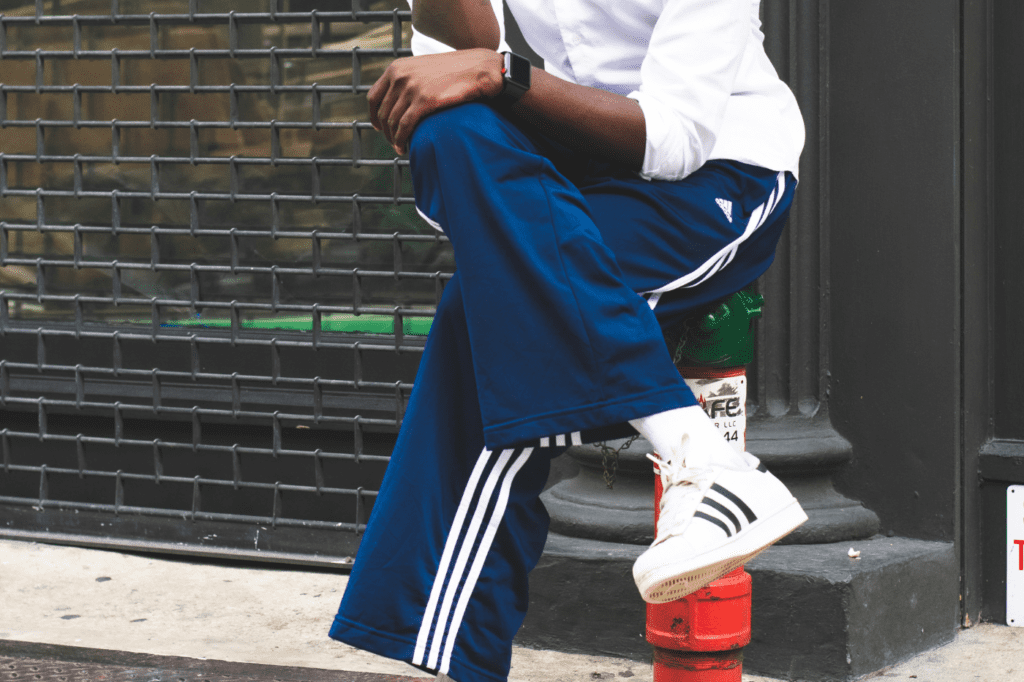
As of November 2023, Adidas, owned by Adidas Group, receives a “Not Good Enough” rating on Good On You.
In the “Planet” rating, Adidas uses some lower-impact materials and has set targets for reducing greenhouse gas emissions and eliminating hazardous chemicals by 2025, but lacks evidence for biodiversity protection.
In the “People” rating, Adidas’s social auditing program is accredited, but it falls short on ensuring living wages and has been linked to human rights violations.
In the “Animals” rating, Adidas has a formal animal welfare policy but lacks clear implementation, and there’s uncertainty around wool sourcing claims.
How sustainable and ethical is Puma?
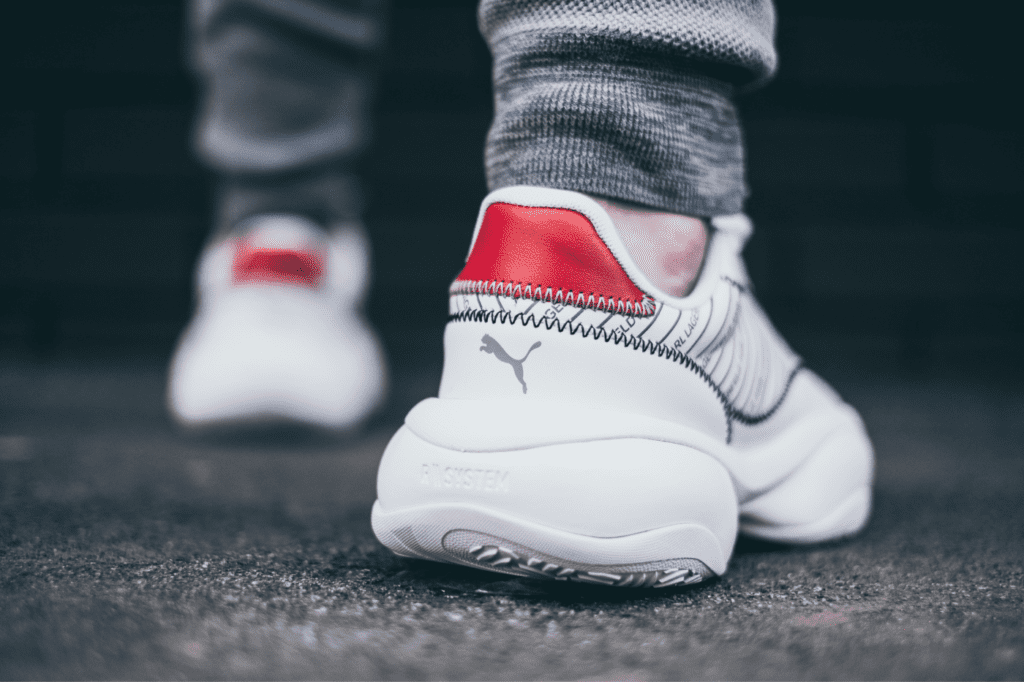
As of July 2023, Puma receives a “Good” rating on Good On You.
In the “Planet” rating, Puma is praised for using lower-impact materials, supporting microplastic initiatives, and setting ambitious targets for greenhouse gas emissions and chemical elimination. The brand also offers clothing recycling.
In the “People” rating, Puma’s accredited social auditing program and transparency efforts are notable, though there’s room for improvement in diversity support.
In the “Animals” rating, Puma has a well-implemented animal welfare policy and traces some animal-derived materials to the first production stage.
How sustainable and ethical is Gucci?

Gucci received an “It’s a Start” rating on Good On You as of August 2023.
In the “Planet” category, Gucci is praised for using lower-impact materials, implementing science-based targets, and reducing chemical-heavy processes.
In “People,” its accredited social auditing program and transparency efforts contribute to a “Good” rating, although living wages are not consistent throughout the supply chain.
In “Animals,” Gucci has a formal animal welfare policy but scores “Very Poor” due to the use of various animal-derived materials.
Conclusion
In the realm of sustainable and ethical fashion, every choice we make echoes beyond aesthetics. It’s a call to shift from mere consumers to conscious contributors to change.
Your Call to Action:
The pitfalls of fast fashion—exploitation and environmental harm—are evident. Now, we hold the power to redefine the narrative. Choose brands committed to ethics and sustainability, making every purchase a vote for a better fashion industry.
Let your wardrobe be a testament to a conscious revolution. Each decision you make shapes a future where style and ethics coexist.

